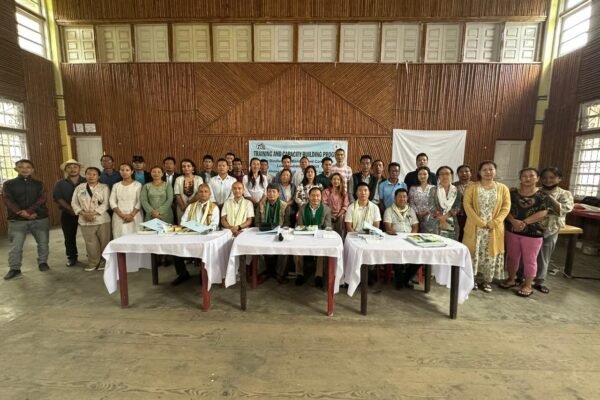Government offices across Naga-inhabited hill districts of Manipur remained non-functional on Monday, marking the first day of a five-day office picketing protest launched by the All Naga Students’ Association, Manipur (ANSAM).
According to ANSAM volunteers, the protest witnessed a widespread response, with government establishments in Senapati, Ukhrul, Tamenglong, Chandel, and Kangpokpi districts wearing a deserted look. The agitation was initiated under the leadership of the Senapati District Students’ Association (SDSA).
The protest is being carried out in strong opposition to the scrapping of the Free Movement Regime (FMR) and the ongoing construction of border fencing along the Indo-Myanmar border. ANSAM expressed that these moves pose a significant threat to the cultural, traditional, and ancestral connections shared among Naga communities residing on both sides of the international boundary.
The decision to launch the protest was taken during ANSAM’s Presidential Council Meeting held on June 16 in Senapati. Volunteers clarified that the agitation is not an isolated event but represents the collective frustration and deep resentment among the Naga population over what they called a unilateral border demarcation executed without consultation or consent.
ANSAM further warned that any unrest or adverse incidents arising during the course of the protest would be the responsibility of both the Central and State governments. The association maintained that the protest is being conducted in a peaceful and disciplined manner.
In a bid to draw international attention, ANSAM has also reached out to global bodies including the United Nations and the Unrepresented Nations and Peoples Organization (UNPO), urging immediate intervention to halt the construction of the border fence and to reinstate the Free Movement Regime. The FMR earlier allowed cross-border movement within a 16-kilometre radius without visa requirements.
ANSAM volunteers voiced concerns that the removal of the FMR and the fencing activities could have far-reaching consequences, not only restricting mobility but also affecting social, cultural, environmental, and humanitarian aspects. They warned that the physical division could further marginalize and alienate indigenous Naga communities with long-standing cross-border relationships.









